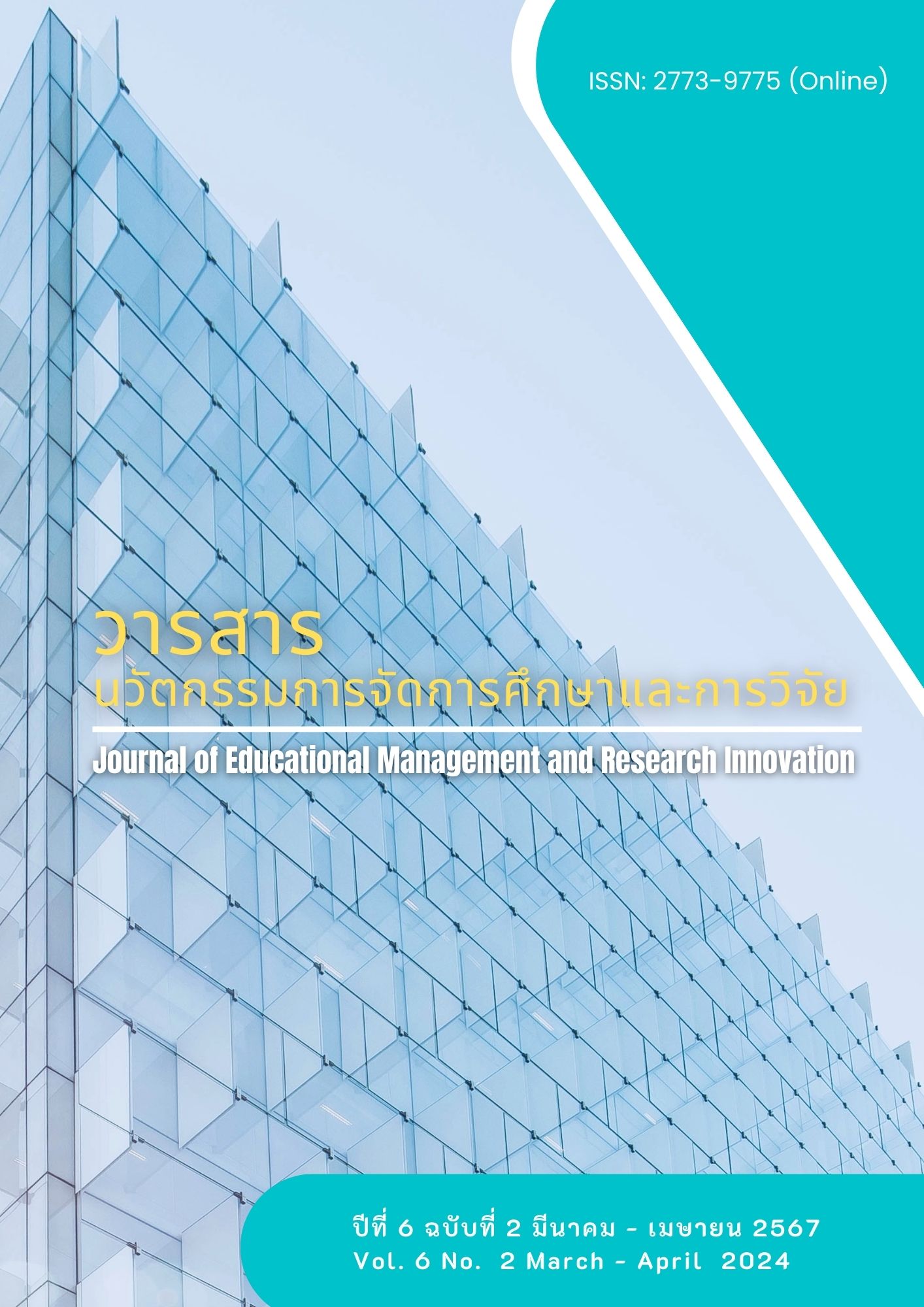Guidelines For Using Innovation in Teaching Social Studies in Higher Education Institutions
Main Article Content
Abstract
This article has been studied Guidelines for using technology in teaching in higher education institutions, which the study has important main points presented as follows: Concepts about administration of higher education institutions, Concepts about innovations in social studies education, using innovations in teaching and learning in social studies groups.
The results of the study found that: Concepts regarding the management of higher education institutions include excellence and growth according to potential. and leadership the concept of higher education administration has been proposed as follows: creating talented, strong, and courageous people; encouraging talented people to be the best they can be. Promote a sense of excellence within the institution. Create and promote knowledge in all aspects of society Be a thought leader, pointing out right and wrong for society, making good choices for people, society and the world and upholding the value of being alert to change. Concepts about innovation in social studies education educational innovation involves a variety of processes. such as creativity Problem solving needs Managing and expanding knowledge and improvement and development This method is popular. Because it saves both time and budget. There is also a chance of success. Using innovations in teaching social studies groups Using innovations in teaching social studies in higher education institutions to be used with students to promote Support teaching and learning to be efficient and effective. To use the results of the study as information for improvement. and developed using innovations in teaching and learning in the social studies subject group.
Article Details

This work is licensed under a Creative Commons Attribution-NonCommercial-NoDerivatives 4.0 International License.
References
พระดรัณภัทร ศรีทับทิม. (2563). ศึกษาการใช้นวัตกรรมการเรียนการสอนกลุ่มสังคมศึกษา ศาสนา และวัฒนธรรมในศตวรรษที่ 21 ของครูโรงเรียนประถมศึกษา เขตบางเขน กรุงเทพมหานคร. วารสารปัญญา, 27(2), 129-138.
พัชราภรณ์ ดวงชื่น. (2561). ผู้นำองค์กรในโลก VUCA. วารสารมหาวิทยาลัยคริสเตียน, 24(3), 450-458.
ไพฑูรย์ สินลารัตน์. (2560). การศึกษาไทย 4.0 โรงเรียนผลิตภาพ. กรุงเทพฯ: มหาวิทยาลัยธุรกิจบัณฑิตย์.
รัตน์ขนก พราหมณ์ศิริ. (2564). การใช้เทคโนโลยีกับการจัดการศึกษาของนักศึกษาระดับอุดมศึกษาในจังหวัดพิษณุโลก. วารสารวิจัยทางการศึกษา, 16(1), 27-38.
ศิริเกษม ศิริลักษณ์. (2564). รูปแบบการบริหารสถาบันอุดมศึกษาในยุคดิจิทัล(วิทยานิพนธ์การศึกษาดุษฎีบัณฑิต). มหาวิทยาลัยนเรศวร.
สุทธิพร ลีเจริญ. (2565). แนวทางการพัฒนานวัตกรรมการเรียนรู้ในกลุ่มสาระการเรียนรู้สังคมศึกษาศาสนาและวัฒนธรรม ในโรงเรียนมัธยมศึกษา สังกัดสำนักงานเขตพื้นที่การศึกษามัธยมศึกษา เขต 8 จังหวัดกาญจนบุรี(วิทยานิพนธ์ศึกษาศาสตรมหาบัณฑิต). มหาวิทยาลัยศิลปากร.
สมควร นามสีฐาน, ทวีศิลป์ สาระแสน และประยูร แสงใส. (2561). การพัฒนานวัตกรรมนวัตกรรมในการสอนสังคมศึกษาแนวพุทธในศตวรรษที่ 21. วารสารบัณฑิตศึกษามหาจุฬาขอนแก่น, 5(1), 82-95.
Karnouskos, S. (2017). Massive Open Online Courses (MOOCS) As an Enabler for Competent Employees and Innovation in Industry. Computers in Industry, 91, 1-10.
Shapiro, H. B., Lee, C. H., Roth, N. E. W., Li, K., Çetinkaya-Rundel, M., & Canelas, D. A. (2017). Understanding The Massive Open Online Course (MOOC) Student Experience: An Examination of Attitudes, Motivations, And Barriers. Computers & Education, 110, 35-50.
Watson, S. L., Watson, W. R., Yu, J. H., Alamri, H., & Mueller, C. (2017). Learner profiles of attitudinal learning in a MOOC: An explanatory sequential mixed methods study. Computers and Education, 114, 274-285.

